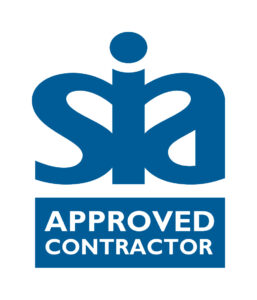If you are a landlord or have management responsibilities of a residential building, then you have a basic duty to manage the health and safety of your residents. If you have experience in this area then you will have good knowledge of these health and safety responsibilities and will have robust systems in place. However, it is difficult to know if these systems ensure you are always safeguarded against problems occurring and whether you have sufficient contingency plans in place when operations are running differently to normal. A solution to this is a waking watch system.
What is a waking watch system?
When you have a standard fire safety survey undertaken on your residential property, it will highlight the potential hazards of the building via a fire risk assessment, and it will implement control measures to manage these hazards, plus it will install obligatory control measures which you are duty bound to have in place in order to comply with current fire regulations. However, there are times when these control measures are compromised or where added safety measures are needed to manage fire risks, and this is where a waking watch system is the solution.
Waking watch is the implementation of a 24/7 physical patrol of a site by SIA-licenced personnel in the event that standard fire safety controls are temporarily not in place, or where additional safety controls are required. A waking watch patrol will spot fire hazards, initiate evacuation procedures manually, alert emergency services where required and minimise potential dangers to ensure the business or property continues to operate smoothly and safely.
In what circumstances would a waking watch patrol be required?
A waking watch patrol is an additional layer of fire safety security, and is available to apply in circumstances of your choosing. There are many common examples of when a waking watch patrol might be required:
- When a water supply has had to be turned off and hence automatic sprinklers won’t operate if needed
- Where construction, renovation or repairs are being carried out on a residential building
- Where the fire alarm system is not working or is undergoing maintenance
- When there has been a power cut
- When there is a high profile event taking place the next day or there is something of high value on the site and the building requires additional security and patrols
- When hot work is taking place and hence there is an additional fire risk
It is common for many of these items listed above to occur with a residential building, particularly if it is a high-rise building. In August 2023 there was an example of 400 flats in a residential scheme in Milton Keynes being placed under a 24/7 waking watch patrol, due to remedial fire safety work taking place. The flats were having wooden cladding removed from the external faces of the buildings in the wake of concerns raised by the 2017 Grenfell Tower tragedy. This meant that the residents were facing an additional risk due to repairs and renovations taking place, and so the property management deemed it necessary to implement round-the-clock waking watch surveillance.
Professional waking watch patrols
So a waking watch patrol in a residential building is usually an interim measure to ensure that fire safety is not compromised at any time. This is why it is 24/7, because where a standard fire safety system may not be adequate on a temporary basis, a fire hazard can cause a problem at any time day or night. It is important to remember that your residential building needs a 24/7 waking watch patrol if:
- There is no central fire alarm system on a temporary basis
- An element of the fire alarm system has been compromised
- There is a need for additional fire safety control because of activities currently going on in and around the site
If you require a professional waking watch patrol or require a fire risk assessment to establish whether your fire safety system is adequate, then contact First Response Group today and we can work with you to ensure your residential building has suitable and sufficient fire safety control measures at all times.

Article By:
Director











